How in 1940 half of the Kriegsmarine destroyers were destroyed. Battles of Narvik
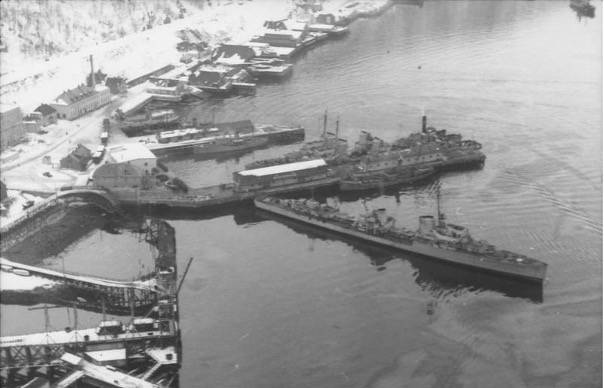
To capture the port of Narvik, located far to the north, the Kriegsmarine assigned 10 destroyers under the command of Commodore Bonte. The ships served as high-speed transports for about 2 thousand mountain rangers. In the early morning of April 9, 1940, they entered the fjord, quickly crushing the resistance of the Norwegian forces. Then the ships split up, dropping the soldiers into predetermined places. According to the plan, having landed the troops, the destroyers were supposed to refuel with the help of the arrived tankers and return to their bases. But only one tanker managed to reach the destroyers. The second was captured and sunk by the Norwegians. As a result, refueling took longer than planned: one tanker could serve only 2 ships at a time, spending 7–8 hours each.
For Britain, the landing of German troops came as a complete surprise. A compound under the command of Admiral Whiteworth was sent to Narvik to prevent the delivery of reinforcements to the Germans.
The formation included a fleet of destroyers of the Captain Warburton-Lee. Initially, the British did not have information about the forces of the Germans and only on the way received information from the Norwegians that Narvik had been captured. Warburton-Lee was given the right to independently decide whether it was advisable to make an attack in such an environment.
On the morning of April 10, it was snowing heavily, the visibility did not exceed several hundred meters. Under cover of the weather, a detachment of British destroyers consisting of Hardy, Hunter, Havok, Hotspur and Hostile entered the harbor. Their first torpedo salvo was very successful. The German destroyer Wilhelm Heidkamp was hit by a torpedo in the stern, which detonated her own torpedoes. The commander of the flotilla died on it.
Also 2 torpedoes hit Anton Schmitt, which exploded and sank on the spot. The shock wave also damaged the nearby Hermann Künne. Having regained consciousness, the German artillerymen opened fire on the Havoku. The Dieter von Roeder fired torpedoes, but they passed under British ships. The German destroyer itself was seriously damaged and went to the pier. Also on "Hans Ludemann" one of the cellars had to be flooded to save the ship from detonation.
Seeing that the enemy destroyers were disabled, the British focused their fire on the transports, sinking 8 of them. Considering the goal fulfilled, Warburton-Lee ordered to withdraw. But then 3 German destroyers appeared from the starboard side. Two more destroyers - "Bernd von Arnim" and "Georg Thiele" - were seen ahead of the British, which at first even misled them, the British took them for their own. But soon Arnim and Thiele began shelling the destroyers of the Royal Navy. A little later, Wolfgang Zenker, Erich Köllner and Erich Giese entered the battle.
Their cross-fire incapacitated the Hardy, in which Warburton-Lee was mortally wounded. The Hunter was hit by a torpedo, and when the ship stopped, it was rammed by the Hotspur, which had previously lost control. The colliding destroyers came under heavy fire, but the intervention of the Havok and Hostile helped the Hotspur to leave the battlefield. The Hunter soon sank. On the way out of the fjord, the British managed to find and sink a German supply vessel. As a result, the German destroyers were unable to replenish their ammunition.
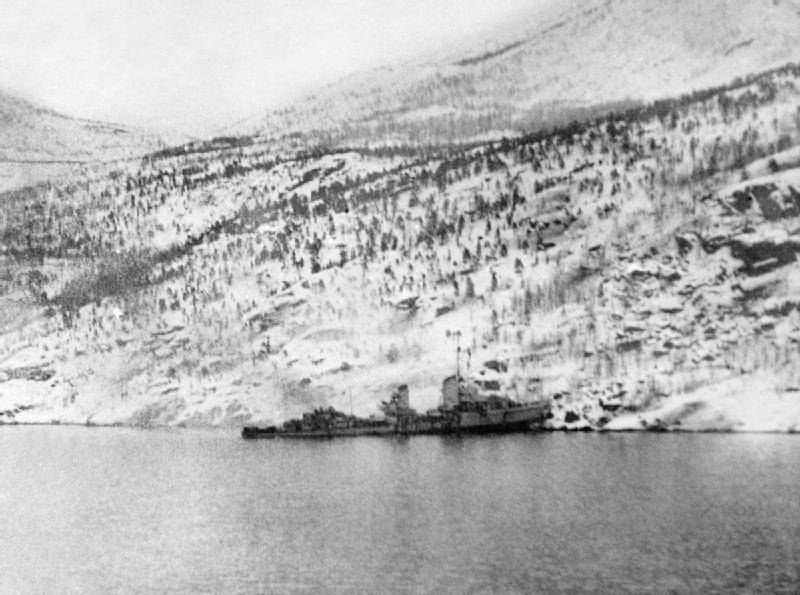
The position of the Germans became difficult. The main forces of Admiral Whiteworth's squadron began to pull up to the exit from the fjord. Among the German destroyers, only Wolfgang Zenker and Erich Giese had enough fuel and did not have any damage requiring immediate repair. Their attempt to break through was made on the evening of April 10, but the British forces at the exit from the fjord were considered too superior.
Having received reinforcements, the Royal Navy was not long in coming. Already on April 12, the port was attacked by a British deck aviation, which was able to damage the Erich Köllner. Meanwhile, the German ships began to occupy their intended positions. The damaged "Köllner" went to its position, accompanied by the "Kühnne" going on patrol. The eldest of the officers, Captain Zur See Erich Bey, believed that the attack of the British fleet would begin in the afternoon of the next day.
And so it happened. In the afternoon, a British squadron of 9 destroyers led by the battleship Worspite entered the fjord. A reconnaissance aircraft from the flagship gave information about the hidden German ships. In the Herjangfjord, he sighted a U-64 submarine. The pilot very accurately dropped a couple of bombs, sinking the submarine.
Meanwhile, the British destroyers Bedouin, Punjabi and Eskimo engaged the Erich Köllner. Supported by battleship fire, they quickly destroyed their opponent. The German ships "Zenker", "Arnim", "Ludemann" and "Kühnne" imposed a battle on the British. Due to poor visibility, the accuracy of fire from both sides remained low. Only the Bedouin was hit by several shells, because of which the 120-mm gun mounted on its forecastle was carried overboard. The Germans had another problem - they almost ran out of ammunition, which forced Rear Admiral Bey to give the signal to withdraw.
In the harbor of Narvik, the Kossack, with the support of Worspite, engaged the Röder in battle. Damaged, "Kossak" lost control and ran aground, from which it was removed only the next morning.
When the Röder ran out of shells, it was abandoned by the team. It was decided to blow up the ship along with the approaching Foxhound, but the Briton stopped and was not damaged by the explosion of the Röder. At the same time, the "Georg Thiele" managed to hit the "Eskimo" with a torpedo, which tore off the bow to the second gun.
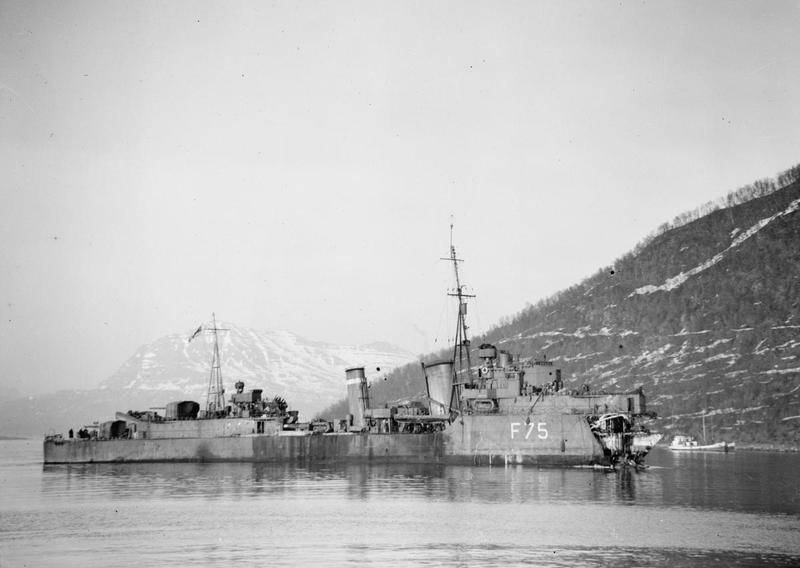
Soon the Bedouin, Forister and Hirow approached, and the German ship had no chance. It ceased fire due to heavy damage and a lack of shells, after which it ran aground and broke. "Ludemann" moved into the depths of the fjord, where "Arnim" and "Zenker" were already there. They had no ammunition left, and the teams decided to destroy their ships. Arnim and Zenker were blown up. But on "Ludeman" the charges did not work, and the British boarded the destroyer. Seeing what condition he was in, they abandoned the idea of towing the ship like a trophy. Later, the German destroyer was finished off by torpedoes from the Hirow. At this point, the battle ended.
On April 10 and 13, 10 German and 2 British destroyers were sunk in the fjords near Narvik. This British success did not prevent the Germans from continuing their campaign and eventually taking over Norway. But he to a decisive extent allowed the Allies to start hostilities in the region, landing troops there and not allowing the Germans to occupy the territory as quickly as possible. In addition, the destruction of 10 German destroyers in these battles - half of all the destroyers of the Kriegsmarine in general - seriously affected the situation at sea. Thus, it was not possible to defend Norway, but the Germans were significantly weakened.
The events of those days were discussed in more detail in the Wargaming studio in the podcast “Marine stories"- we recommend to watch!
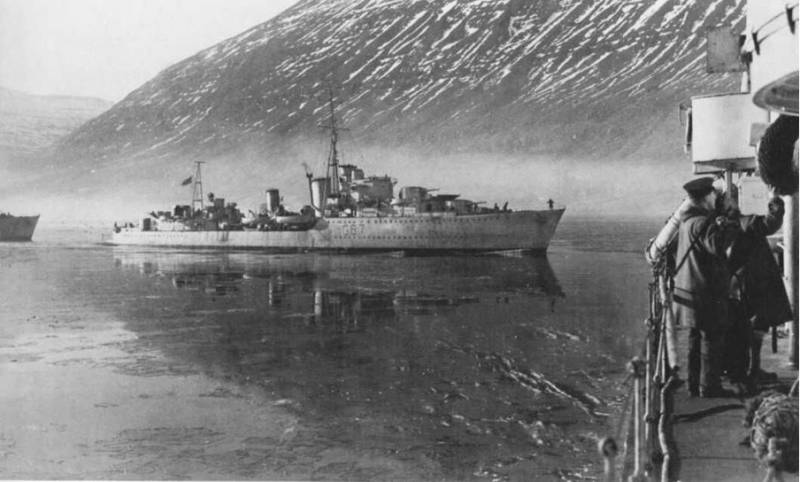
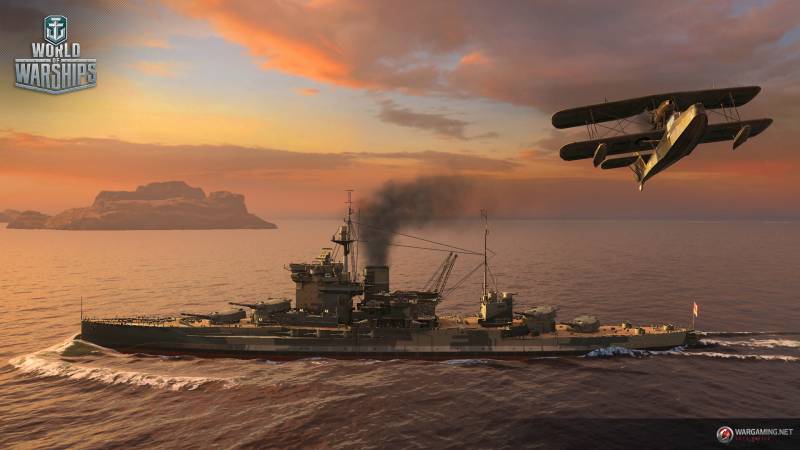
Information